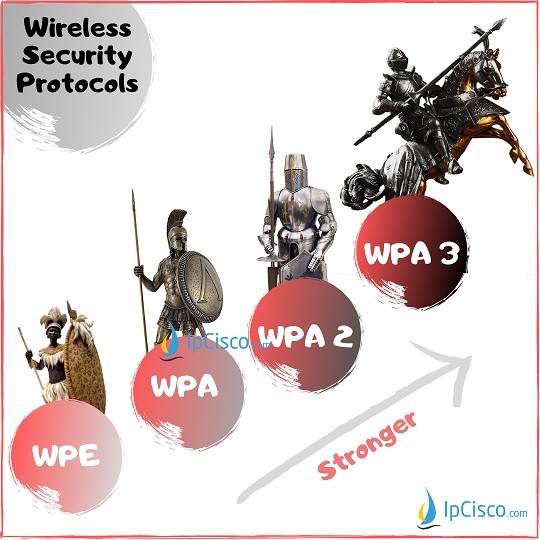

#Security wep vs wpa Offline
Instead of a four-way handshake authentication, SAE improves the security of initial key exchange and offers better protection against offline dictionary-based attacks. The key length for AES has increased.Īnother new feature of WPA3 is Simultaneous Authentication of Equals or SAE. 2018: WPA3 – still uses AES but replaced CCMP with the Galois/Counter Mode Protocol (GCMP). If you want to connect to a network that uses a pre-shared key, then you need to know the SSID and the pre-shared key.Ĥ. It also introduced Wi-Fi Protected Setup (WPS). For backward compatibility reasons, you can still use TKIP as a fallback mechanism for WPA clients.
#Security wep vs wpa upgrade
2004: WPA2 – the most significant upgrade in WPA2 is that it uses AES-CCMP encryption instead of the old RC4 encryption. TKIP uses 256-bit keys instead of the 64 and 128-bit keys in WEP.ģ. 2003: Wi-Fi Protected Access (WPA) – this wireless security standard uses Temporal Key Integrity Protocol (TKIP), which recycled some items from WEP, and it still uses the RC4 algorithm. The IEEE declared in 2004 that WEP had been deprecated as it failed to meet its security goals.Ģ. Therefore, we need to implement Wi-Fi security. The convenience of Wi-Fi networks also makes it easy for transmissions to be overheard and exploited by malicious users. But because a Malicious User is within the wireless range of the wireless access point, it could potentially gain access to the same confidential data. In our figure below, let’s consider that User1 is trying to send confidential data to User2. Unlike in wired networks, where data is transmitted through fiber and copper cables, the Wi-Fi network transmits data across the air in accordance with the transmitter’s antenna pattern, and it could reach any Wi-Fi-enabled devices that are within the range. Having a Cisco wireless network makes it easier to bring new devices online, and it also provides flexible support to mobile end users. Wireless Access Points (WAP), or Access Points (AP), allow wireless devices to connect to both wireless and wired networks. Wi-Fi is an abridgement for Wireless Fidelity, a networking technology that connects computers and other network devices using radio waves.


 0 kommentar(er)
0 kommentar(er)
